With its dreamy rolling green hills and medieval castles, Germany is one of the most beautiful countries in Europe. A favorite destination for travelers with an interest in history and culture, Germany is also an underrated foodie paradise.
Although you’re probably familiar with Oktoberfest, Germany offers a rich and creative cuisine that goes well beyond pretzels and beer. Picture yourself savoring Munich’s tender Schweinshaxe, digging into Berlin’s hearty Eisbein, or enjoying a slice of Dresden’s sweet Dresdner Stollen. Each region brings its own unique flavors to the table, offering a culinary journey that’s as captivating as the country’s landscapes.
So grab your passport and join us as we explore Germany’s best food destinations, where each city serves up its own delicious specialties that reflect the heart and soul of Central Europe’s largest and most populous nation.
Munich

Traditional Munich Weisswurst
Foodies traveling to Munich should make a beeline for some Weisswurst, the city’s signature dish and a favorite German sausage. Weisswurst, or “white sausage,” is made with pork back fat and minced veal seasoned with lemon, parsley, and a variety of other spices. Custom dictates that it should be eaten no later than noon, and it is typically served with a refreshing glass of cold beer.
Munich is also known for Schweinshaxe, a traditional Bavarian take on pork knuckle. A favorite dish at German beer halls, Schweinshaxe is slow roasted for several hours to give the meat a juicy, tender texture and is served with boiled potatoes and sauerkraut.
Nuremberg
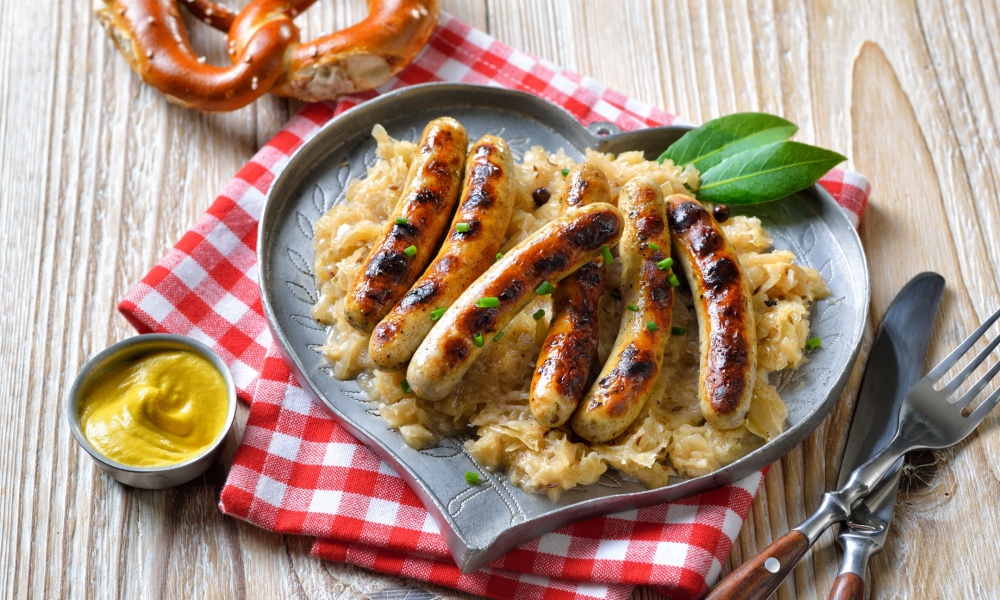
Fried Nuremberg sausages with sauerkraut
Located in the picturesque Franconia region of Bavaria, Nuremberg is another haven for travelers interested in remarkable cuisine. Nuremberg’s signature dish is Nürnberger Rostbratwurst, one of the oldest bratwurst recipes in the entire country. Nürnberger Rostbratwurst is known for its long, skinny casing, which according to legend allowed for sausage makers to slip it through the city’s ancient keyhole to wayward travelers after curfew.
Made from ground pork, marjoram, and plenty of different spices, Nürnberger Rostbratwurst is often eaten as a sandwich called Drei im Weckla. This popular street food is made with three Nürnberger Rostbratwurst links served on a bun with mustard. Lastly, Nürnberger Rostbratwurst can also be served by itself with potatoes and sauerkraut.
Berlin
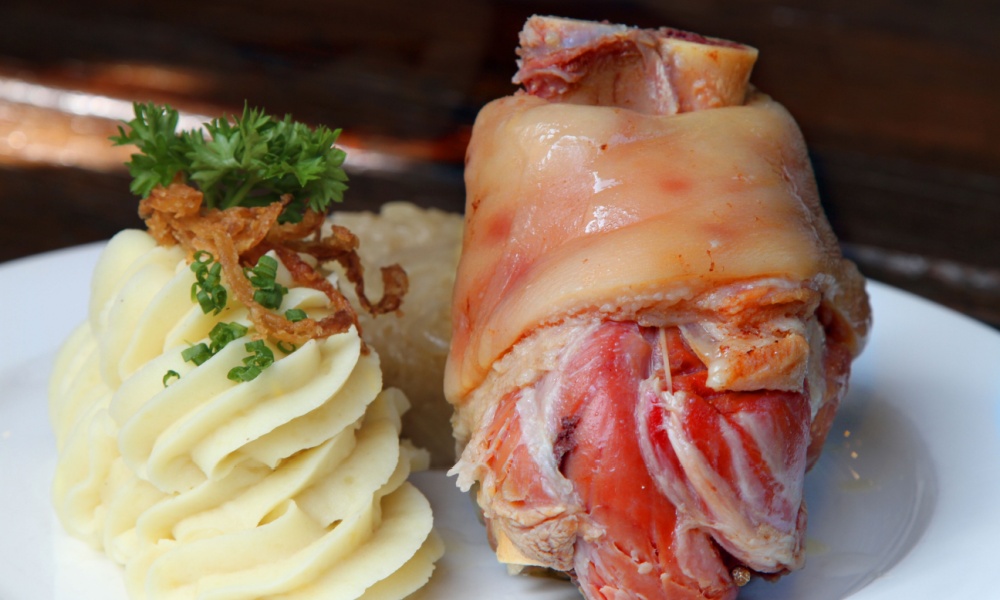
Berliner Eisbein with potato mash and sauerkraut
As Germany’s capital and largest city, Berlin has a vibrant and diverse culinary scene that makes it a favorite stop on any foodie tour of the country. One of the city’s signature dishes is its famous Currywurst. An iconic street food that has been a hallmark of German cuisine since the late 1940s, Currywurst is a grilled bratwurst smothered in curry sauce. A paragon of the city’s fast-food scene, Currywurst is traditionally served in small pieces alongside French fries.
Meanwhile, visitors to the city with more elevated tastes should try Eisbein, one of the city’s more traditional dishes. A rich and savory meal, Eisbein is boiled and cured pork knuckle served with pease pudding. If you want to explore the city’s international side, be sure to try a plate of Döner Kebab. Heavily exuding Turkish influence, Döner Kebab is a sliced chicken or veal sandwich loaded with cabbage, vegetables, and a variety of sauces.
Hamburg
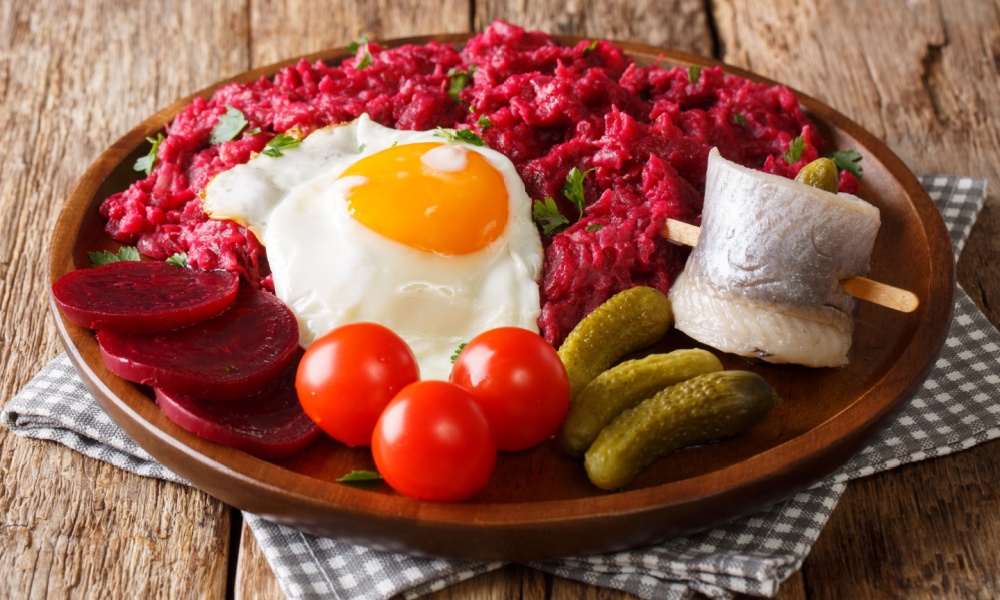
Labskaus, a traditional German breakfast
Hamburg’s status as one Germany’s major ports on the North Sea is reflected in its two signature dishes, Fischbrötchen and Labskaus. Fischbrötchen is a traditional German fish sandwich that has taken on new life as one of Hamburg’s most popular street foods. Most commonly made from herring, mackerel, or salmon, Fischbrötchen is served on a round or elongated roll packed with dried onions, pickles, and remoulade.
While Hamburg is often associated with the origin of the iconic hamburger, the connection is more symbolic than direct. The name “hamburger” is indeed derived from Hamburg, where minced beef dishes like the “Hamburg steak” were popular among German immigrants who brought the idea to America. Over time, these evolved into the hamburger we know today, but the sandwich as we recognize it was developed in the United States.
A dish originating with German sailors in the 16th century, Labskaus is Hamburg’s most famous breakfast delicacy. A one-dish mixture made with salted beef, potatoes, and beetroot topped with pickles, herring, and a fried egg, Labskaus represents a hearty collection of flavors that has earned it a spot in some of Hamburg’s finest restaurants.
Dresden

Saxonian potato soup
Renowned for its Baroque architecture and beautiful views of the River Elbe, Dresden welcomes foodies with some of Germany’s tastiest dishes. When thinking of Dresden, most food lovers are immediately reminded of Dresdner stollen, a sweet bread baked with nuts and fruit. Especially popular during the Christmas season, stollen is often topped with powdered sugar or icing, an attribute that legend says is meant to symbolize the swaddled Baby Jesus.
You also won’t want to miss the Sächsische Kartoffelsuppe, a Saxon potato soup. A creamy comfort dish popular both as a snack and a starter for a larger meal, Sächsische Kartoffelsuppe is made with potatoes, onions, and green vegetables. Dresden’s take on the iconic German dish also adds a healthy dose of browned sausage.
Leipzig
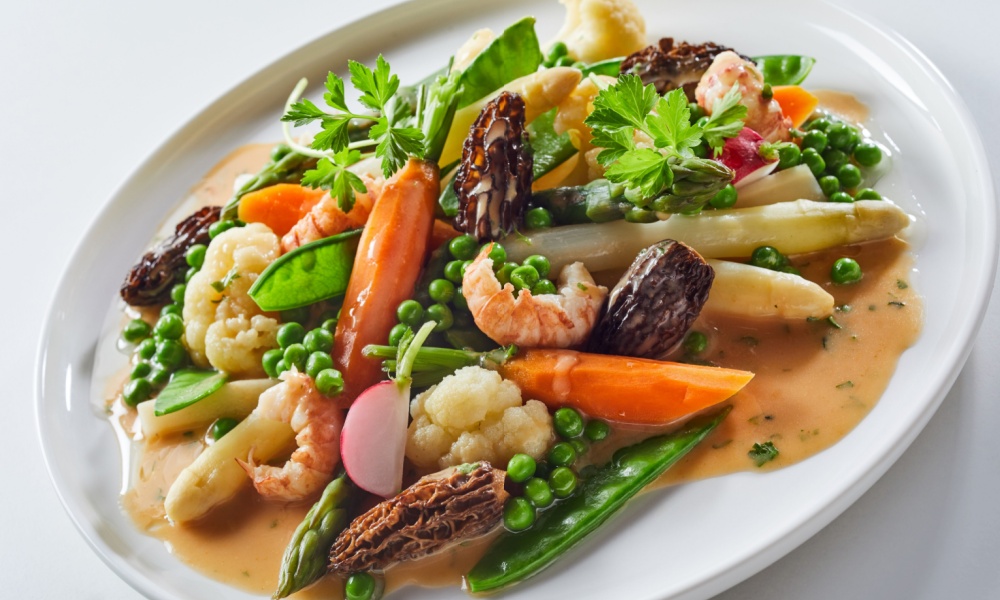
Leipziger Allerlei
Leipzig is Saxony’s most populous city, and it’s a top destination for anyone eager to explore German cuisine. One of the city’s most famous dishes is Leipziger Allerlei, a medley of vegetables such as carrots, peas, and green beans, all native to the region. The vegetables are typically blanched to preserve their bright colors and then sautéed in butter, often with a rich vegetable or cream-based sauce to add depth of flavor. According to local legend, this dish originated during the Napoleonic Wars when city officials, trying to appear less wealthy to avoid heavy taxes, encouraged restaurants to serve only vegetable-based dishes. While traditionally a simple and hearty vegetable dish, Leipziger Allerlei can also be enhanced with shrimp, making it a versatile choice as either a side or a main course.
Cologne

Heaven and Earth: Blood sausage, fried onions and mashed potato with apple sauce
Among the most popular places to visit in Western Germany, Cologne
Cologne, one of the most popular places to visit in Western Germany, is a city rich in history and known for its outstanding cuisine. Among its signature dishes is Himmel un Ääd, a comforting and hearty dish whose name translates to “heaven and earth.” The dish combines sweet apples (“heaven”) with mashed potatoes and sautéed onions (“earth”). Typically, these ingredients are cooked separately, with the apples being stewed or sautéed until soft, and the potatoes mashed with butter and cream. Himmel un Ääd is often accompanied by a savory portion of blood sausage, which is pan-fried until crisp on the outside, adding a rich, meaty flavor to the dish.
Another of Cologne’s culinary treasures is Rheinischer Sauerbraten, a traditional roast of beef or veal. The meat is marinated for 3 to 5 days in a mixture of red wine, vinegar, sugar beet syrup, and a blend of spices and vegetables like onions, bay leaves, and cloves. This lengthy marination process tenderizes the meat and infuses it with a distinctive sweet and sour flavor. After marination, the meat is slow-cooked until it reaches a tender, melt-in-your-mouth consistency. Rheinischer Sauerbraten is typically served with potato dumplings and applesauce, which complement the rich flavors of the roast.
Düsseldorf
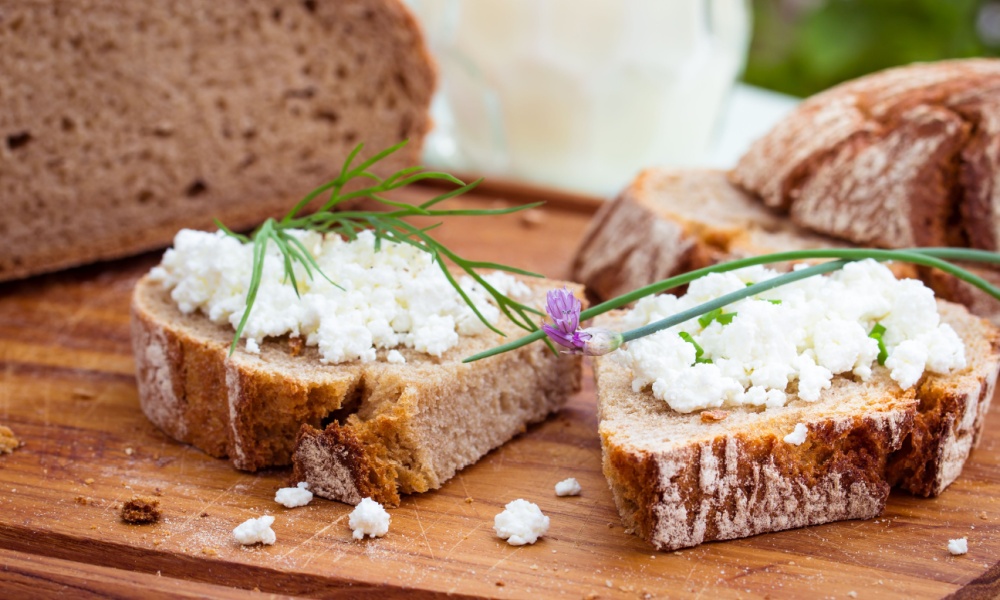
Sometimes, all you need is some rye bread and cheese
One of the jewels of the Rhineland region, Düsseldorf sits at the summit of Germany’s culinary achievements, and is particularly well-regarded for its exceptional bars and brewpubs. Foodies often pair their glass of cold beer with a plate of delicious Halve Hahn, Düsseldorf’s signature dish. Halve Hahn is a simple snack of buttered rye bread with gouda cheese on the side. Sometimes served as a sandwich, it can also be accompanied by pickles, caramelized onions, and sharp mustard. Pubs serving Halve Hahn usually recommend diners pair the dish with a glass of altbier to bring out the flavors of the iconic dish.
You Might Also Enjoy: How’s About a Brew, Eh? A Craft Beer Tour of Canada
Stuttgart

Stuttgart’s very own Maultaschen
Situated among the beautiful vineyards of the state of Baden-Württemberg, Stuttgart has a culinary scene that exudes an aura of sophistication. Among the city’s many tasty dishes is Maultaschen, a traditional German dish believed to have originated in the Middle Ages. This dish consists of ravioli filled with meat, spinach, and spiced onions, and can be served in many different ways, including fried and in beef broth. Maultaschen is available at most every restaurant in Stuttgart and is often associated with Lent. Legend has it that a rebellious monk at a local monastery, keen on deceiving the Lord, hid chunks of meat in the folds of the doughy treat so that he and his brothers would not have to give up meat for Holy Week.
Gourmands visiting Stuttgart will also not want to miss Spätzle, the region’s traditional egg noodle recipe. Tasty comfort food, Spätzle is prepared in multiple ways, including with lentils and sausage in a dish that is known as Linsen mit Spätzle. Käsespätzle is also a popular dish and is made with layered Spätzle and cheese topped with fried onions.
FAQs:
Q: What is the best time of year to visit Germany for food tours?
A: The best time to visit Germany for food tours is during the fall, especially September and October, when Oktoberfest is in full swing. The Christmas season is also popular for enjoying traditional holiday dishes like Dresdner Stollen.
Q: Do I need to make reservations at restaurants in major German cities?
A: Yes, it’s recommended to make reservations at popular restaurants in major cities, especially during peak travel seasons or weekends.
Q: Are vegetarian or vegan options widely available in German cuisine?
A: Yes, many traditional dishes have vegetarian versions, and major cities like Berlin and Munich offer plenty of vegetarian and vegan restaurants.
Q: Is tipping customary in German restaurants?
A: Tipping is customary in Germany. A 5% to 10% tip is standard, usually by rounding up the bill and leaving the extra amount for the server.
Q: Can I use credit cards in most restaurants in Germany?
A: While credit cards are accepted in many establishments, especially in large cities, it’s wise to carry some cash, as smaller restaurants and rural areas may prefer cash payments.
Q: What should I know about drinking alcohol in Germany?
A: Drinking alcohol in Germany is common, especially beer. The legal drinking age is 16 for beer and wine, and 18 for spirits. Public drinking is generally allowed, but it’s good to check local regulations.
Did we leave out your favorite German delicacy? Tell us all about it in our comments section below!


Leave a Reply